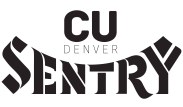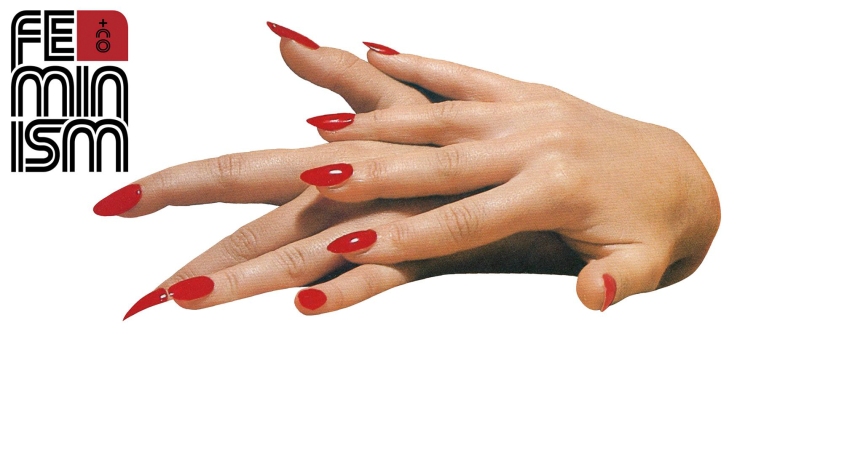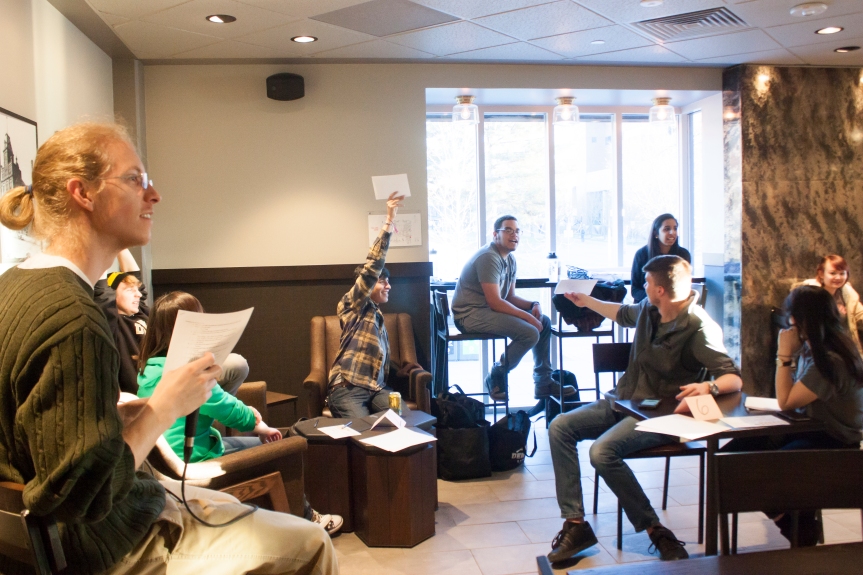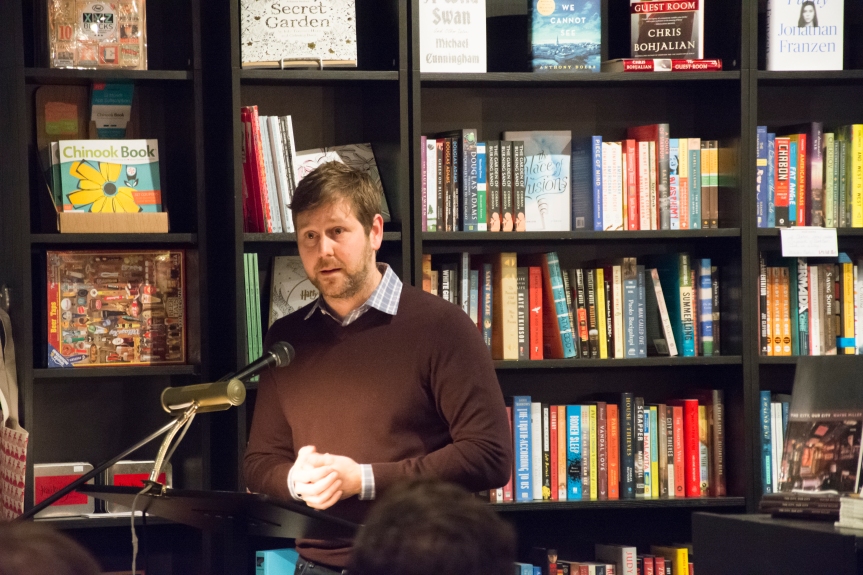STUDENTS ATTEND READING AND DISCUSSION
The Emmanuel Gallery is a hideaway for good art to be seen, heard, and felt. Both Auraria artists and those artists who visit briefly add to the gallery with visual installations or with performances. Blythe Baird is a 19-year-old National Poetry Slam Tournament competitor, published author, former actor, and ordinary student attending Hamlin University in St. Paul, Minnesota.
While she manages the schedule of a busy college student, she still takes the time to perform her poetry at colleges across the US—including CU Denver. Baird performed a collection of poems followed by a group discussion on feminism. As a young writer, Baird sees performing as an opportunity to create change.
“I feel like there is a shortage in youth voices in basically everything,” Baird said. “There is not a lot of opportunity to listen to young people.” As a voice for young writers, she specifically addresses topics such as homophobia, racism, misogyny, violence, and sexual assault on college campuses by drawing from her own experiences.
Baird knew she wanted to be a poet early on. “Before I started writing, my high school had this event called Writers’ Week,” Baird said. “I was in treatment for an eating disorder for three months, and my first day back was during Writers’ Week. There was this slam poet named Sierra DeMulder, and I saw her do a piece on anorexia. I was profoundly affected that day by something I had never had exposure to.”
Baird was inspired to become a writer from then on. “I took recovery seriously,” Baird said. “I didn’t have a method of communication that was plausible for me yet. Slam allowed me to really zero-in on that.” Baird highlighted how poetry slams allow writers to share their poetry in an engaging way through competition.
“The competition culture is something I’m really interested in,” Baird said. “I’m not a competitive person, but I’m a strategic person. If somebody has a funny poem and I have a funny poem, if mine can’t be funnier I’m not going to throw it; I’m going to do something totally different. What plays in that strategy is a very productive way to spend my time. It’s like baseball for English majors.”
Slam poetry is blunt, loud, and moving. Videos of slam poems have spread like wildfire across the internet through the advent of YouTube channels such as Button Poetry or Poetry Slam Inc.
Baird highlighted how Slam poetry is an effective style for poets to take on. “When I was 16, I went to Slam Poetry Camp,” Baird said. “I was really bad at it. But I worked really hard on it, because I saw something in spoken word. I saw this ability to communicate in an effective and concise and artistic way.”
Baird just published her new book, Give Me a God I Can Relate To. Her book is currently available on Amazon.
Emmanuel Gallery
1205 10th St.
(303) 556-8337
Tues.–Fri.: 10 a.m.–6 p.m.
Sat.: 11 a.m.–5 p.m.
—Liam O’Dowd-White
photo courtesy facebook.com/fem&co






